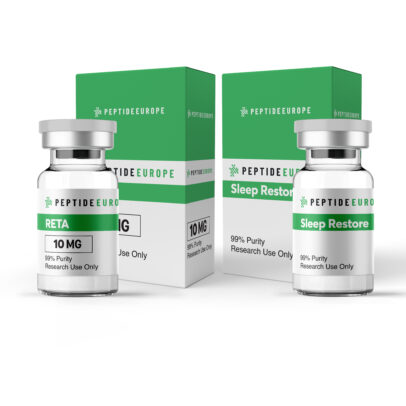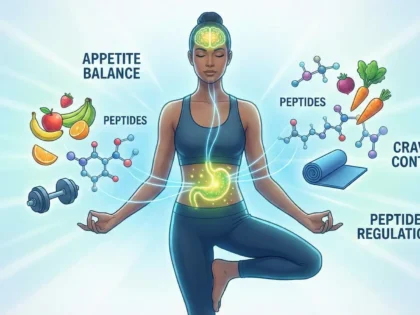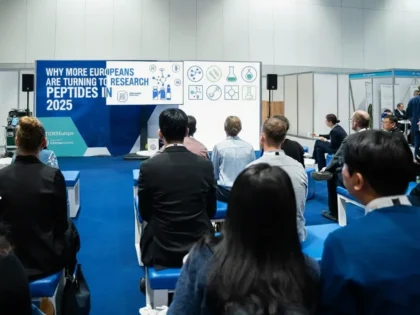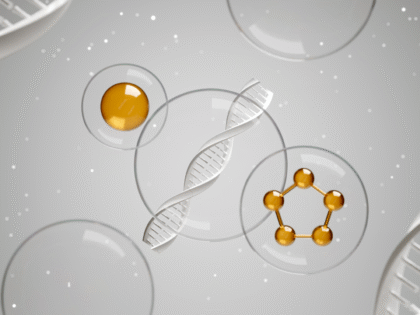Pollen Allergy Season in Europe 2025
-
PepEurope
- Posted on
- 0 comments
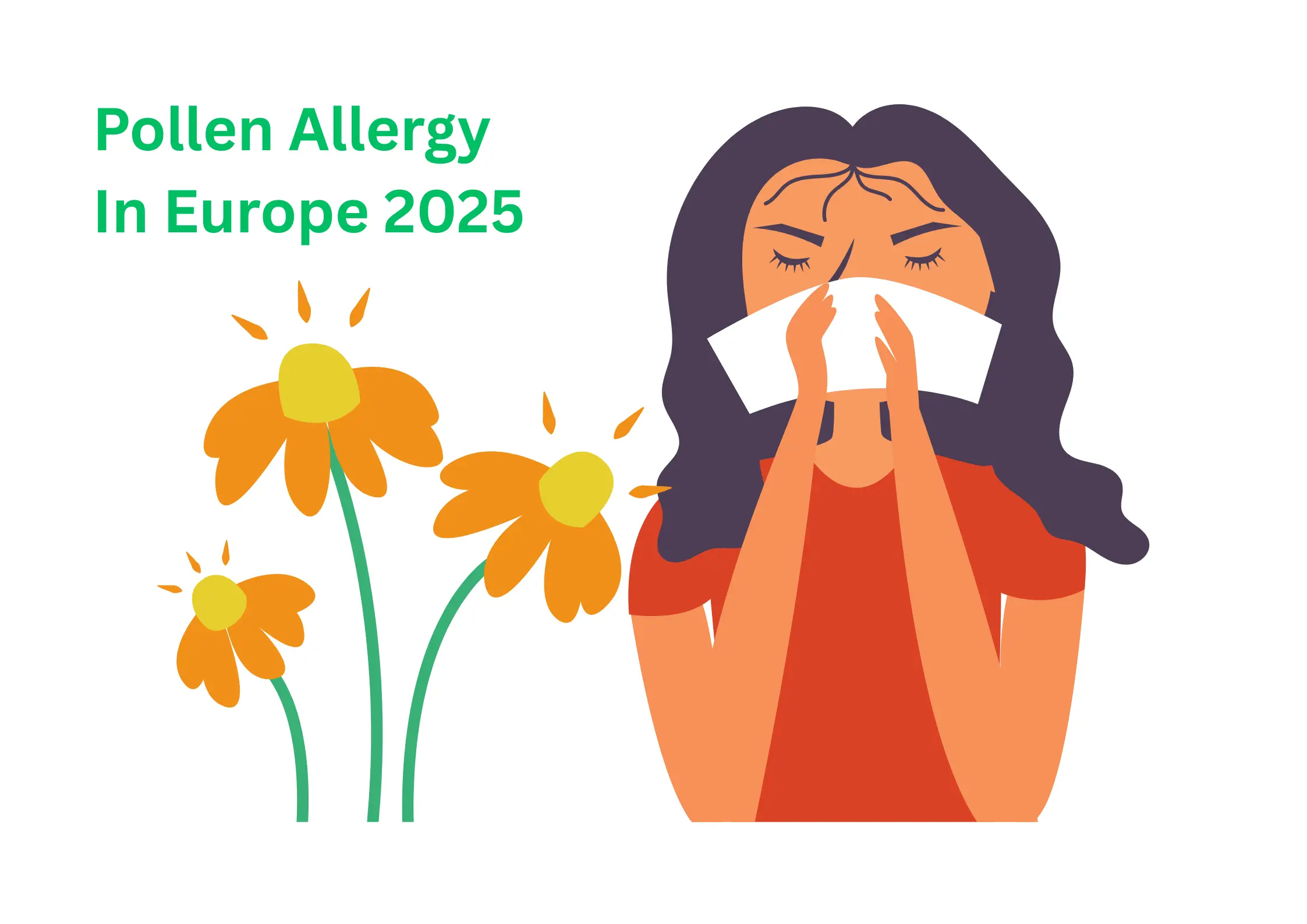
To plants, pollen is life. It carries the genetic material that allows flowers, grasses, and trees to reproduce. But to millions of people across Europe, pollen is also a source of seasonal misery. Pollen also causes seasonal distress, causing pollen allergy!
Every year, as spring approaches, countless people start to experience problems such as sneezing, itchy eyes, watery eyes, and even asthma, which are caused by these tiny grains floating in the air. Pollen allergy, also known as hay fever or allergic rhinitis, is one of the most common allergies in Europe.
With climate change extending pollen seasons and increasing pollen counts, understanding how pollen works and how to manage its effects has never been more important.
In this article, we will explore what pollen is, how it spreads, its impact on human health, the seasonal calendar of pollen in Europe, and practical steps to reduce discomfort.
What Is Pollen Allergy?
Pollen allergy is a fine, powdery substance made up of microscopic grains produced by flowering plants, trees, and grasses. These grains are actually the male gametes of the plant, which carry the genetic material necessary for fertilization.
Under a microscope, pollen grains appear in various shapes and sizes, depending on the plant species. While invisible to the naked eye in small amounts, in large concentrations pollen can coat cars, windowsills, and even the air around us.
For plants, pollination is essential, ensuring their survival and biodiversity. But for humans, especially those with allergies, it can cause significant discomfort at certain times of the year.
Sema Beauty & Slim (weight control / healthy skin)
Sema Metabolic Boost (Appetite / Metabolism / Energy)
Metabolic Boost Duo (Appetite Suppression / Energy / Metabolism)
Sleep and Slim Pack (weight control / sleep regeneration)
How Pollen Spreads
Plants rely on two main methods of spreading pollen: wind and insects. Many trees and grasses produce lightweight pollen grains that can travel hundreds of kilometers with the wind.
This is why someone living far away from forests or fields can still experience strong allergy symptoms. Wind-pollinated plants, such as birch trees or timothy grass, are some of the biggest contributors to seasonal allergies.
On the other hand, insect-pollinated plants rely on bees, butterflies and insects to transfer pollen from flower to flower. Although insect-pollinated pollen is generally less likely and less likely to cause allergies, it plays an important role in food production and biodiversity. In Europe, regional differences also affect how pollen is spread.
For example, birch pollen dominates in Scandinavia, olive pollen is common in Mediterranean countries, and ragweed is spreading across Central and Eastern Europe.
Pollen and Human Health
For those who are sensitive, pollen exposure can trigger the immune system to overreact. The body identifies certain proteins in pollen as harmful invaders, even though they are not. This leads to the release of histamines and other chemicals, which cause inflammation and the well-known symptoms of hay fever.
Sneezing, runny nose, itchy and watery eyes, and fatigue are the most common complaints. In some cases, exposure to pollen can worsen asthma symptoms, leading to coughing, wheezing, and shortness of breath. Studies have shown that about one in five Europeans suffers from pollen allergies, making it a major public health concern.
For children, pollen allergies can affect school performance, while adults may find their productivity reduced during peak pollen season. Beyond personal discomfort, pollen allergy also places a burden on healthcare systems through increased consultations, medication use, and even hospital visits in severe cases.
Sema Beauty & Slim (weight control / healthy skin)
Sema Metabolic Boost (Appetite / Metabolism / Energy)
Metabolic Boost Duo (Appetite Suppression / Energy / Metabolism)
Sleep and Slim Pack (weight control / sleep regeneration)
Seasonal Pollen Calendar For Europe
Pollen season in Europe varies significantly depending on the region, plant type, and climate conditions. While some areas experience early spring pollen, others may have a longer season extending into late autumn. Understanding the timeline can help the pollen allergy sufferers plan their activities and take preventive measures.
- Spring (March–May) Tree Pollen:
- Birch: One of the most allergenic trees in Northern and Central Europe, birch pollen peaks in April and May, causing hay fever in millions of people.
- Alder: Releases pollen slightly earlier, often in March and early April, particularly in Scandinavia.
- Hazel: Common in Northern Europe, hazel pollen is usually one of the first allergens in spring.
- Oak: Produces pollen from late March to May, contributing to seasonal allergies in urban and rural areas.
- Regional notes: Northern countries like Finland and Sweden have short but intense pollen seasons, while Central Europe sees a more extended spring pollen period.
- Summer (June–July) – Grass Pollen:
- Timothy Grass: A major trigger of hay fever, particularly in Central and Northern Europe.
- Ryegrass: Widespread across Europe, ryegrass pollen peaks in early summer.
- Orchard Grass: Common in rural areas; its pollen is light and easily airborne.
- Impact on humans: Grass pollen is among the most potent allergens, responsible for sneezing, itchy eyes, and asthma flare-ups. People living in suburban or rural areas with large meadows are often more affected.
- Environmental influence: Grass pollen levels can rise with warmer temperatures, longer daylight hours, and minimal rainfall.
- Autumn (August–September) – Weed Pollen:
- Ragweed: Highly allergenic and spreading in Central and Southern Europe, including Hungary, Italy, France, and the Balkans. Ragweed pollen peaks in mid to late September.
- Mugwort: Often found in temperate regions, releasing pollen in late summer.
- Plantain: Common in urban areas, plantain pollen may trigger allergies in sensitive individuals.
- Regional variations: Southern Europe may experience pollen from weeds later into October due to warmer climates, extending the allergy season.
- Special Considerations:
- Southern Europe: Olive, cypress, and plane trees can contribute to early spring allergies.
- Northern Europe: Shorter but intense tree pollen season, especially birch and alder.
- Urban areas: Cities often have higher pollen concentrations due to a combination of plant density and air pollution, which can increase allergenicity.
- Climate change: Rising temperatures and increased CO₂ levels are lengthening pollen seasons, causing earlier starts and later finishes, sometimes by several weeks. This means allergy sufferers may experience symptoms for longer periods than previous generations.
- Practical takeaway:
- Allergy sufferers should monitor local pollen forecasts, know which plants are active during specific months, and take preventive measures accordingly.
- Awareness of seasonal patterns allows for better planning of outdoor activities, medication use, and lifestyle adjustments during peak pollen periods.
Pollen, Climate Change, and Urban Life
Climate change is altering the pollen landscape in Europe in worrying ways. Warmer temperatures and higher levels of carbon dioxide allow plants to grow faster and produce more pollen. Research shows that pollen seasons are starting earlier and lasting longer, sometimes by several weeks.
For example, birch pollen appears in early spring in Scandinavia, while ragweed season lasts into autumn in Central Europe. High pollen counts are also being recorded across the continent, increasing the severity of symptoms for allergy sufferers.
In addition, urban environments amplify the effects of pollen. Pollution particles in the air can interact with pollen, making it more allergenic and harder for the body to tolerate.
This explains why people living in cities often report stronger allergy symptoms than those in the countryside, even if they are exposed to the same types of pollen.
Coping with Pollen Allergies
Managing pollen allergy is all about reducing exposure and finding the right treatment. Here are some effective strategies:
- Check pollen forecasts regularly – Many European countries provide daily pollen updates. Plan outdoor activities for days when pollen counts are lower.
- Limit outdoor exposure in the mornings – Pollen levels are usually highest between 5:00 am and 10:00 am, so save outdoor activities for later in the day or after rain, when pollen levels drop.
- Keep windows and doors closed – Use air conditioning with clean filters instead of natural ventilation to keep pollen out of your home and car.
- Use HEPA filters indoors – High-efficiency particulate air filters can significantly reduce pollen and dust inside the house.
- Shower and change clothes after being outdoors – Pollen sticks to skin, hair, and fabrics. A quick rinse can prevent pollen from spreading indoors.
- Wash bedding more often during pollen season – This reduces pollen that settles on sheets and pillows.
- Wear sunglasses and masks outdoors – Sunglasses protect eyes from irritation, while medical or FFP2 masks can help block inhalation of pollen.
- Avoid drying clothes outside – Pollen can stick to laundry left outdoors.
- Medication options:
- Antihistamines to relieve sneezing and itching.
- Nasal corticosteroid sprays to reduce congestion and inflammation.
- Leukotriene inhibitors (for some patients, under medical advice).
- Allergy shots (immunotherapy) for long-term relief, especially in severe cases.
- New innovations – Scientists are testing nasal filters that trap pollen before it enters the airways, offering a promising non-medication solution.
Sema Beauty & Slim (weight control / healthy skin)
Sema Metabolic Boost (Appetite / Metabolism / Energy)
Metabolic Boost Duo (Appetite Suppression / Energy / Metabolism)
Sleep and Slim Pack (weight control / sleep regeneration)
Trees, Grasses, and Weeds to Watch Out For
Certain plants are much more likely to trigger allergies than others. In Europe, birch, oak, alder, and hazel trees are among the most problematic, releasing large amounts of allergenic pollen in spring.
Grass pollen, especially from timothy, rye, orchard, and Kentucky bluegrass, is one of the most widely used triggers across the continent. Weed pollen also plays an important role, with ragweed, plantain, sagebrush, and mugwort causing symptoms in late summer and early fall.
Ragweed, in particular, is a growing concern because it spreads quickly and produces highly allergenic pollen. For allergy-prone families, landscaping choices can make a difference.
Choosing trees and shrubs that produce less pollen, such as dogwood, pear, plum, or redbud, can help reduce exposure around homes and gardens.
FAQs: People Also Ask
What do you mean by pollen?
Pollen is a fine powder produced by plants to reproduce. It contains the male genetic material needed for fertilization and can be spread by wind or insects.
What is in pollen?
Pollen is made up of proteins, starch, and other compounds. For plants, it is essential for reproduction, but for humans, these proteins can sometimes trigger allergic reactions.
What is a pollen allergy?
A pollen allergy, commonly called hay fever or allergic rhinitis, occurs when the immune system overreacts to pollen proteins, causing sneezing, itchy eyes, congestion, and sometimes asthma flare-ups.
When is the pollen season in Finland?
In Finland, pollen season usually begins in March with alder and hazel trees, peaks in April and May with birch pollen, continues with grass pollen in June and July, and ends with mugwort in August.
Is pollen worse in cities than in the countryside?
Yes. In urban areas, pollen interacts with air pollution, making it more allergenic. Pollution also irritates the respiratory system, worsening the effects of pollen exposure.
Can diet or lifestyle reduce pollen allergy symptoms?
While diet alone cannot prevent pollen allergies, maintaining a healthy lifestyle with regular exercise, stress management, and good sleep can strengthen the immune system. Avoiding smoking and reducing indoor allergens can also make symptoms easier to manage.
Conclusion
Pollen is one of nature's most essential substances, allowing plants to reproduce and ecosystems to thrive. Yet, for millions of people across Europe, it is also the cause of seasonal allergies and daily discomfort. As pollen seasons grow longer and more intense due to climate change, awareness and preparation become increasingly important.
By understanding when pollen is most prevalent, taking steps to reduce exposure, and exploring treatment options, individuals can enjoy the beauty of Europe's natural landscapes while also finding relief. Pollen may never go away, but with the right knowledge and tools, its impact on health and daily life can be greatly reduced.
Sema Beauty & Slim (weight control / healthy skin)
Sema Metabolic Boost (Appetite / Metabolism / Energy)
Metabolic Boost Duo (Appetite Suppression / Energy / Metabolism)
Sleep and Slim Pack (weight control / sleep regeneration)
Are You Struggling to Lose Weight Despite Diet and Exercise?
Many people face the frustrating challenge of stubborn fat that just won't budget, even with strict diets and rigorous workouts. This is often due to slow metabolism, hormonal imbalances, or difficulty burning fat efficiently.
So, what's the solution?
Weight loss peptides offer a cutting-edge approach backed by research. These peptides help boost metabolism, regulate appetite, and promote fat burning naturally. By targeting the root causes of weight gain, peptides can accelerate your fat loss journey safely and effectively.
At PepEurope Ltd, we provide high-quality, scientifically formulated weight loss peptides designed to help achieve fitness goals faster and maintain a healthy, sustainable weight. Remember to use peptides only for research, not for consumption.





